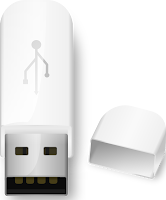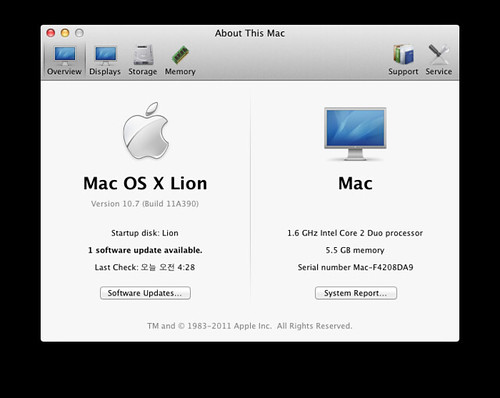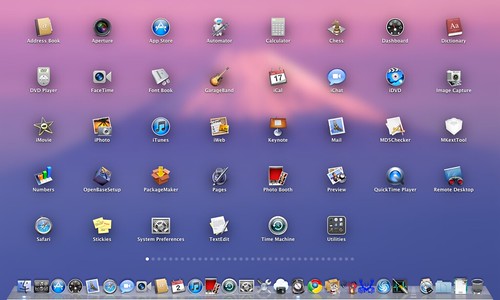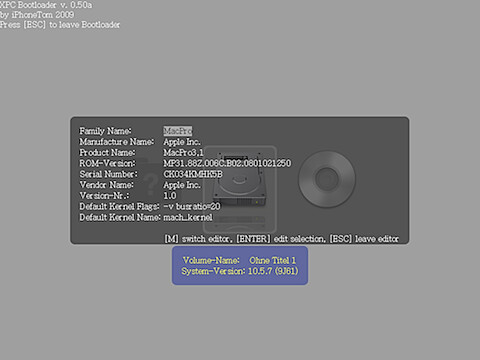The Alternatives
Users with ATI cards basically have these options:
- Open Source Drivers These are stable and nice, but
currently have poor 3D performance, if any. If you have a Radeon X1k
product or earlier, this is your only option.
- The Ubuntu Way Use the restricted-driver management system that comes with Ubuntu to install the drivers.
- Third (Fourth?) Party Installer Use envy/jockey or other installer helper.
- Install the drivers manually Using the installer downloaded from AMD's site via either package based install or direct install.
[edit] Open Source Drivers
By default, Ubuntu will already try to use one of the open source
drivers for your hardware. If the feature set and stability work for
you, then you don't need to change anything.
The drivers that may be used are
- vesa Lowest common denominator across all graphics vendor, not many features.
- ati Actually a facade that will invoke the radeon driver.
- radeon Driver support all radeon classes of hardware - with limited 3D for newer cards.
- radeonhd An alternate driver support R520 hardware and later.
By default there is no configuration file for X anymore, so X will try to do the right thing.
If you run into stability problems with 3D applications using the radeon/radeonhd drivers, consider trying a more recent kernel.
mainline-2.6.29.3 did the trick on a few machines.
There's an ongoing debate about how and if the radeon and radeonhd drivers will be used in the future.
[edit] The Ubuntu way
[edit] Restricted Drivers Manager
- Ubuntu 9.04 (Jaunty) provides a notification saying that there are restricted drivers available
- Go to the Restricted Drivers Manager and enable the "ATI accelerated graphics driver"
- Ubuntu will then install and configure the driver for you
Note that you will be restricted to the drivers for you version of
Ubuntu that Canonical deem as stable. This may not give you the latest
drivers, but should be safest.
[edit] Installing the drivers manually
This portion of the guide works, since I have used it myself. I
guess the rest of the guide is broken or it may be because the new
driver doesn't support any of the older ATI cards anymore. Which cards
does ATI no longer support?
The ATI Radeon 9500-9800,X300-X2100,Xpress. See the complete list [1] here.If
your card is on that list, you are restricted to the 9.3 driver -
however since 9.3 driver doesn't support xorg-xserver 1.6, it will not
work with Jaunty! This guide currently is for installing 9.4. !!!SO BE
CAREFUL!!!
_______________________________________________
I recommend using copy and paste. However, you can Ctrl + C in
your browser but you cannot Ctrl + V in the terminal. When you have
copied something simply use Shift + Insert to paste into the terminal
or go to the terminals menu, select edit and click paste. This method
will ensure there are no typing mistakes and will greatly speed up the
install process.
If you are using the x86_64 architecture (64 bit), be sure to install "ia32-libs" before proceeding!
Make sure universe and multiverse are enabled in your repository sources.
[edit] Before you start
Install the necessary programs
| Terminal Command
|
|
sudo apt-get install build-essential cdbs fakeroot dh-make debhelper debconf libstdc++5 dkms
|
[edit] 1. Download the latest Catalyst package.
Download page: Catalyst 9.4. This package contains both the 32-bit and 64-bit driver.
Open a terminal window and switch to the directory you downloaded the installer to. (Example: $ cd Desktop)
Make sure your directory path does not contain spaces
[edit] 2. Create .deb packages.
| Terminal Command
|
|
sh ati-driver-installer-9-4-x86.x86_64.run --buildpkg Ubuntu/jaunty
|
[edit] 3. Just in case
Write down or remember this series of Alt+PrntScr key combinations,
just in case your screen should go black and Ctrl+Alt+F1 and
Ctrl+Alt+Backspace doesn't work.
Alt+PrntScr+r, Alt+PrntScr+s, Alt+PrntScr+e, Alt+PrntScr+i, Alt+PrntScr+n, Alt+PrntScr+u, Alt+PrntScr+b
These keypresses will reboot the system safely. To remember the
keypresses, remember this nonsensical phrase: "Raising Skinny Elephants
Is Never Utterly Boring"
[edit] 4. Install .debs.
Install the debs, depending on if you're on a 32-bit or 64-bit system:
| Terminal Command
|
|
sudo dpkg -i xorg-driver-fglrx_*.deb fglrx-kernel-source_*.deb fglrx-amdcccle_*.deb
|
(This may fail due to a missing dpmk. If so install this first. Also
check the version numbers (8.561) against the created debs)
| Terminal Command
|
|
sudo dpkg -i xorg-driver-fglrx_*.deb fglrx-kernel-source_*.deb fglrx-amdcccle_*.deb
|
Using tab completion can make this command easier.
[edit] 5. Additional 64-bit instructions
If you have a 64 bit install, the above dpkg command may complain
that "Errors were encountered while processing: fglrx-amdcccle". This
is because of a dependency of the amdccle package on 32 bit libraries.
If you receive this error, issue the following command after the above
dpkg command, which will force the installation of all of the 32 bit
dependencies, and then the amdcccle package:
| Terminal Command
|
|
sudo apt-get install -f
|
Catalyst 9.4 on 64-bit systems requires the --force-overwrite command in the above dpkg command:
| Terminal Command
|
|
sudo dpkg -i --force-overwrite xorg-driver-fglrx_*.deb fglrx-kernel-source_*.deb fglrx-amdcccle_*.deb
|
Using tab completion can make this command easier.
[edit] 6. Generate a new /etc/Xorg.conf file
| Terminal Command
|
|
sudo aticonfig --initial -f
|
in a terminal. If it doesn't give an error you should be good.
[edit] 7. Force use of /etc/Xorg.conf file
Some people find that changes to xorg.conf don't get used by the
driver. To force the ati driver to adopt changes made to xorg.conf,
type the following command:
| Terminal Command
|
|
sudo aticonfig --input=/etc/X11/xorg.conf --tls=1
|
[edit] 8. Test your installation
Finally, reboot the computer and type
| Terminal Command
|
|
fglrxinfo
|
into the terminal. If the vendor string contains ATI, you have installed the driver successfully. Release 9.4 looks like:
display: :0.0 screen: 0
OpenGL vendor string: ATI Technologies Inc.
OpenGL renderer string: ATI Radeon HD 4800 Series (This line may be different depending on what graphics card you are using.)
OpenGL version string: 2.1.8591
Please note: Depending on the particular ATI card that you own, you
may or may not automatically have all of the relevant driver features
enabled. R500 and R600 cards (X1xxx, HD series, and newer) in
particular will need TexturedVideo enabled in Xorg.conf (rather than
the traditional VideoOverlay) in order to support Xv accelerated video
playback.
[edit] HOW TO UPDATE DRIVER
To update your driver to a new version (say 9.3 to 9.4) first
disable the current driver through Ubuntu's Hardware Manager or use
EnvyNG to remove the driver, then go to synaptic and search for
"xorg-driver-fglrx" without the quotes and mark it for "Complete
removal" and hit "Apply" then reboot your computer. Now simply repeat
steps #1, 2, 4 and finally run these commends in a terminal:
| Terminal Command
|
|
sudo aticonfig --initial -f
|
and
| Terminal Command
|
|
sudo aticonfig --input=/etc/X11/xorg.conf --tls=1
|
then reboot.
It is very important that you COMPLETELY remove the old driver
which includes the config files because when upgrading without
uninstalling the old driver I noticed even though the new driver
installed and worked there were some annoying problems that I
experienced but after I completely uninstalled the driver then
reinstalled it, it worked perfectly.
[edit] Tweaks
- Add tweaks as needed: http://ubuntuforums.org/showthread.php?t=849422
- Restart X, if it doesn't work, you can use the "vesa", "ati",
"radeon" or "radeonhd" driver in the mean time, until you make it work.
- If you downgraded X to make fglrx work: enter synaptic, make
sure all packages with "xorg" and "x11" are locked so that you can
update and upgrade without worries.
Done! Now run amdcccle, glxgears, warsow etc :)
[edit] Issues
[edit] Installation
There are some system configurations on which none of the
installation alternatives work with the latest 9.4 driver (please add;
also please add if you got it to work in one of the listed setups):
- Ubuntu 9.04 (x64) on x86_64 with Radeon HD4870X2: Framebuffer error, garbled screen.
- Ubuntu 9.04 (x64) on x86_64 with Radeon HD 3300 (790GX): garbled screen.
[edit] Mesa drivers
If fglrxinfo reports that Indirect rendering by Mesa is in place,
even though you have installed ATI driver, you might want to remove
Mesa:
- Remove the package xserver-xgl.
sudo apt-get remove xserver-xgl
- Explanation: If you installed this previously in order
to make compiz work, it will not allow direct rendering on your
display. You can check out if this is what it causing the problem by
running
DISPLAY=:0 glxinfo | grep render
- If it returns an ATI renderer, it means that xgl is being displayed indirectly on the display 1. (Taken from [2])
- Warning: This might make your compiz stop working as it
is configured to use XGL. A solution might be to run the Envy script in
order to configure compiz. Or, if Compiz stopped working due to
"Composite" problem, check that the following is set in the
/etc/X11/xorg.conf
Section "Extensions"
Option "Composite" "Enable"
EndSection
- Check for AGP and DRI errors in /var/log/Xorg.0.log like these are:
- (EE) fglrx(0): [agp] unable to acquire AGP, error -1023
- (EE) fglrx(0): cannot init AGP
- (EE) fglrx(0): atiddxDriScreenInit failed, GPS not been initialized.
- (WW) fglrx(0): * DRI initialization failed! *
- If you have Intel 8285P and E7205 chipsets and AGP not detected
then you have to remove the i82875p_edac module and restart a some
others:
rmmod i82875p_edac
rmmod fglrx
rmmod intel-agp
rmmod agpgart
modprobe agpgart
modprobe intel-agp
modprobe fglrx
- Blacklist the modules e7xxx_edac so it doesn't start up again
when booting - add the following line at the beginning of
/etc/modprobe.d/blacklist:
blacklist i82875p_edac
- This has been known to fix issues with -Mesa -AGP -DRI -Google earth and -suspend to RAM (s2ram).
- Explanation: http://openwetware.org/wiki/Computing/Linux/Ubuntu
- Check you are running the correct kernel.
- Explanation: If you're upgrading from Gutsy to Hardy in
some instances the Grub bootloader does not get updated and the new
kernel is not loaded.
- Run in a terminal:
uname -r
- If the output starts with 2.6.22 or below you are not using the current kernel and the Ati drivers will not load properly.
If this doesn't help, try Ubuntu Gutsy Installation Guide#Verifying, or other links: [3], [4], [5].
[edit] Hang at logout
If you experience hangs when logging out (of X) it is probably due
to the /etc/ati/authatieventsd.sh script looking for X authorisation
files in the wrong place when it starts up. You can kill the hanging
authatieventsd.sh processes from a console tty to allow the shutdown of
the X server. This can be fixed permanently with:
sudo mkdir -p /var/lib/xdm/authdir
sudo ln -s /var/run/xauth /var/lib/xdm/authdir/authfiles
If that doesn't work then you can disable atieventsd with this command:
sudo /usr/sbin/update-rc.d -f atieventsd remove
Before the above commands verify that /etc/ati/authatieventsd.sh exists after build and install, if not just do :
(assuming that the installer is in your home directory)
sh ati-driver-installer-8-12-x86.x86_64.run --extract driver
sudo cp ~/driver/packages/Ubuntu/dists/jaunty/replacements/authatieventsd.sh /etc/ati/authatieventsd.sh
(jaunty is to be replaced by the name used at the building stage (intrepid,hardy,8.10,8.04,etc...)
sudo chmod +x /etc/ati/authatieventsd.sh
just reboot login and ctrl+alt+backspace to try
[edit] Suspend/Hibernation
Suspend hibernation works with the latest driver.
For ATI X1400, to get the laptop to wake up from suspend, I had to change the following in /etc/default/acpi-support:
SAVE_VBE_STATE=false
POST_VIDEO=false
ENABLE_LAPTOP_MODE=false
Comment: This is a little surprising, since the comments at
the beginning of /etc/default/acpi-support seem to make it quite clear
that those settings are ignored unless you add "acpi-support" to
SUSPEND_METHODS. --Bewst 23:22, 19 December 2008 (UTC)
For Radeon 3200, to wake up from suspend, I had to add the following
lines to /etc/X11/xorg.conf:
(This settings is not good option, if you are using compiz-fusion or
any other transparency-based thingie. Not working for HD 3850)
Section "Extensions"
Option "Composite" "Disable"
EndSection
Section "ServerFlags"
Option "AIGLX" "off"
EndSection
[edit] Can't remove fglrx with dpkg
If dpkg really-really refuses to remove an older fglrx-package, it
might be needed to edit /var/lib/dpkg/diversions and remove a few
lines. This is a hack and should be avoided.
[edit] This module/version combo is already installed
If you get this error-message, simply uninstall the previous version before installing the new one with:
| Terminal Command
|
|
sudo dkms remove -m fglrx -v 8.522 --all
|
[edit] New kernel installed?
I found out that when getting a new kernel the fglrx kernel-module is not installed for your new kernel.
You can do that by these simple steps:
| Terminal Command
|
|
sudo dkms build -m fglrx -v 8.552 -k `uname -r`
sudo dkms install -m fglrx -v 8.552 -k `uname -r`
|
if amdcccle doesn't work and says Identifier is not a valid word. Use lower case letter in xorg.conf































